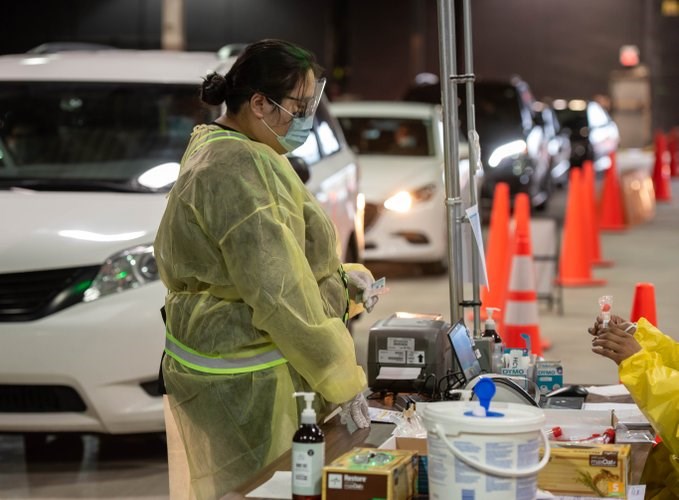As B.C. struggles under a rising burden of COVID-19 variants, the Tri-Cities has emerged as a major source of transmission — by some metrics, only surpassed by Surrey.
Between April 7 and 13, the Tri-Cities had roughly 30 new cases per 100,000 people, the third-highest rate in all of Fraser Health after Surrey and Abbotsford.
When broken down by total case count, the Tri-Cities local health area had the second-highest caseload in the province last week after Surrey.
"We have ongoing challenges and high rates of transmission… particularly in and around Surrey and the Tri-Cities area," said Provincial Health Officer Dr. Bonnie Henry in a briefing Thursday afternoon.
In Fraser Health, the B.1.1.7, of U.K. variant, has emerged as the dominant COVID-19 variant of concern, whereas in Vancouver Coastal Health, the P.1 variant, first reported in Japan but later identified in Brazil, is dominating new cases.
Combined, the variants make up nearly 60 per cent of all new cases in the province, according to BC Centre for Disease Control surveillance data released Thursday.
WHERE IS TRANSMISSION OCCURRING?
Spring break coincided with an increase in cases among young people, and that, added Henry, “has led to an increase in exposure events in schools when the spring break ended.”
There are currently 14 schools actively flagged for COVID-19 exposures in the Tri-Cities and over 70 in Surrey.
At the same time, B.C.'s top doc pointed to two studies in Fraser Health and Vancouver Coastal Health indicating that schools continue to remain a muted source of transmission compared to the size of the student population.
The surge in cases over the last two weeks has made the job of tracing the origin of infections increasingly difficult, noted Henry.
Public health tactics are evolving to match the spread of variants of concern; Fraser Health began shuttering businesses where three or more people have COVID-19 and transmission is likely to have occurred.
Between April 12 and 14, five Tri-City businesses were closed for at least 10 days by public health teams, including several restaurants and a gym. Several more across the Lower Mainland and up to Chilliwack were also handed closure orders.
But none of those measures will work, said Henry, if British Columbians don’t reduce their contacts and stem the spread of the virus.
2,000 DAILY CASES ON THE HORIZON
New modelling from the province indicates new cases of COVID-19 in B.C. could surge to 2,000 per day by next month if people don’t reduce their contacts.
And the race between vaccinating the province’s population and the rise of variants is far from settled: independent modelling from the BC COVID-19 Modelling Group warns hospitalizations from COVID-19 are projected to overwhelm hospital capacity in British Columbia by May.
The group, led by researchers at UBC and SFU, recommends vaccination efforts target populations most likely to spread the virus as a measure to veer the population away from its current dangerous trajectory in new cases.
“If I’m seeing a group of 10 people, the probability that one of them has the virus and (the) potential to spread it to me right now is highest than it’s ever been,” said Henry.
Henry implored British Columbians to avoid travel outside their immediate neighbourhood, while at the same time emphasizing the importance of spending time outdoors with people in the same household and continuing to wear masks.
Or as Health Minister Adrian Dix put it Thursday, “We are not yet close to community immunity.”



